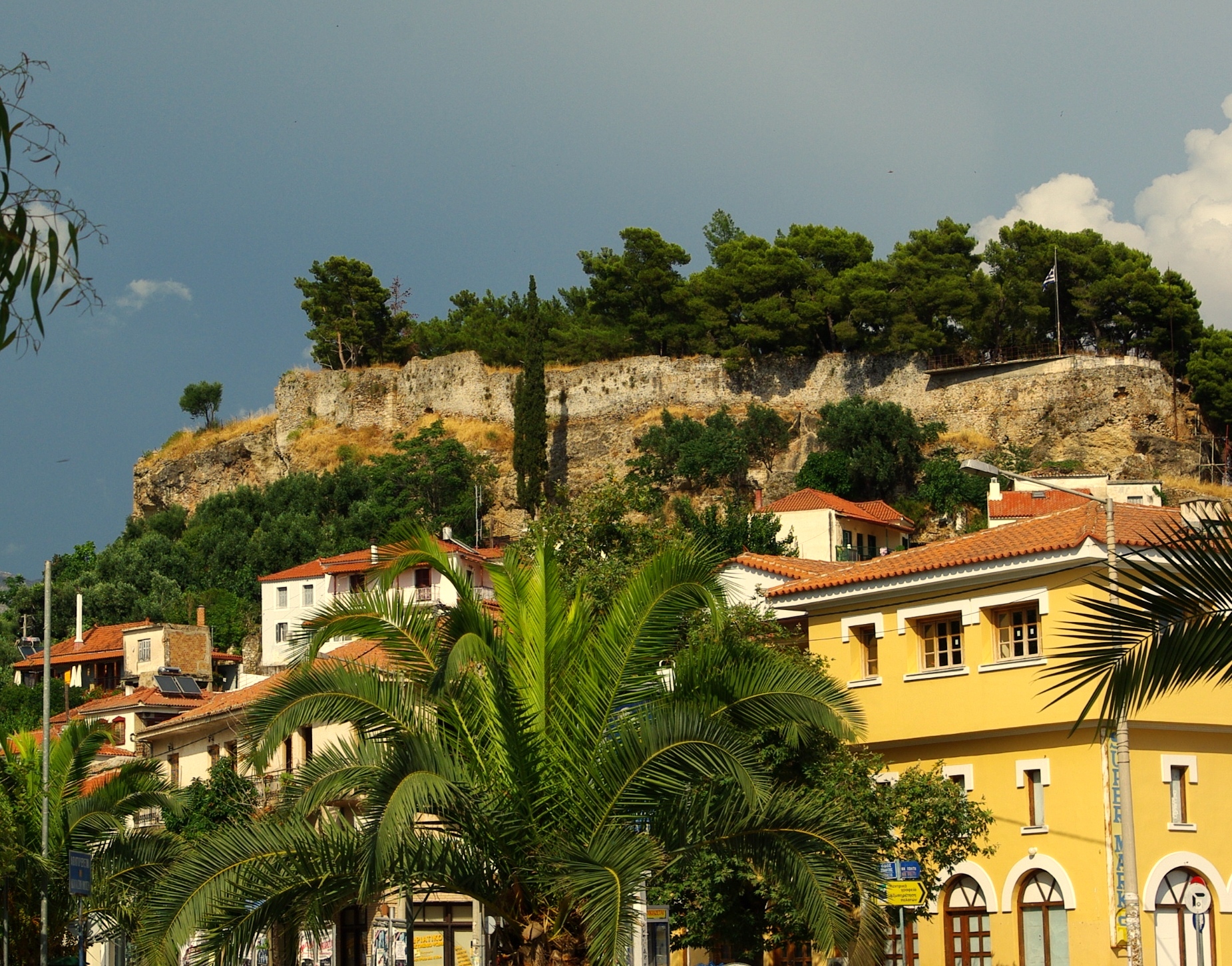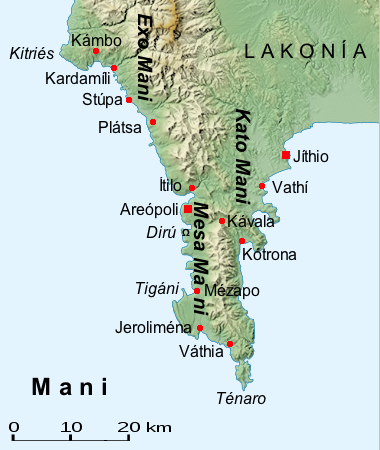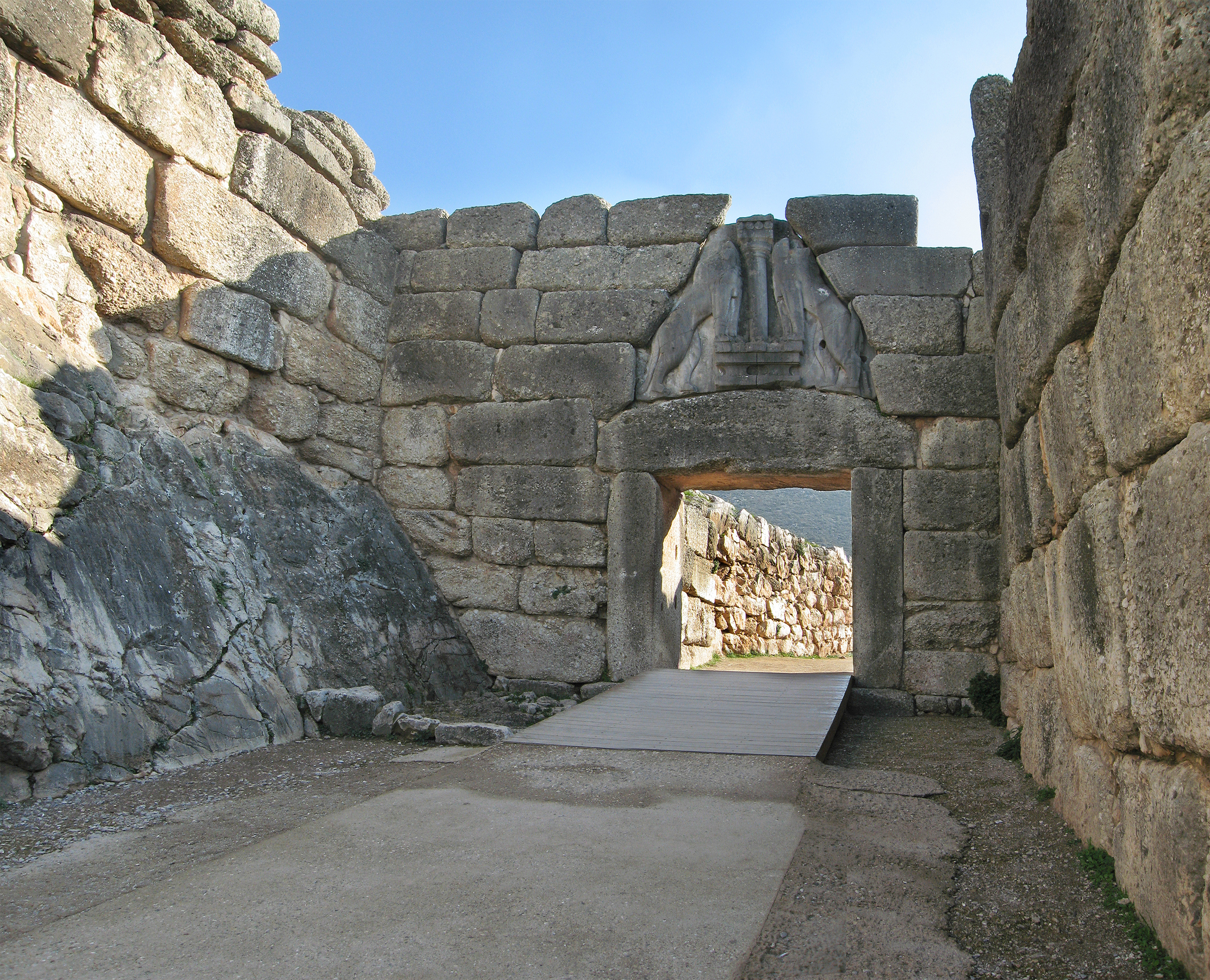|
Kampos, Messenia
Kampos () is a village and a community in the Mani Peninsula, in Messenia in southern Greece. It was the seat of the former municipality of Avia, Messenia, Avia. Kampos had 367 inhabitants in 2021. It is located at height of 350m, on the provincial road Kalamata-Areopoli, 22 km. away from Kalamata. Kampos has primary school and a junior high school. In the village there is the Byzantine church of SS. Theodores which is known for its frescoes. Also, there is the small church of St. John with 13th-century frescoes, and the tower-house of the Koumoundouros family, in which Alexandros Koumoundouros (a 19th-century politician and prime minister of Greece) was born. Near this tower-house there is the arched Mycenaean Greece, Mycenaean tomb of Machaon (mythology), Machaon, son of Asclepius. Above the village is the castle of Zarnata. References {{West Mani div Populated places in Messenia West Mani Mani Peninsula ... [...More Info...] [...Related Items...] OR: [Wikipedia] [Google] [Baidu] |
Peloponnese (region)
The Peloponnese Region (, ) is a region in southern Greece. It borders Western Greece to the north and Attica to the north-east. The region has an area of about . It covers most of the Peloponnese peninsula, except for the northwestern subregions of Achaea and Elis which belong to Western Greece and a small portion of the Argolid peninsula that is part of Attica. Administration The Peloponnese Region was established in the 1987 administrative reform. With the 2011 Kallikratis plan, its powers and authority were redefined and extended. Along with the Western Greece and Ionian Islands regions, it is supervised by the Decentralized Administration of Peloponnese, Western Greece and the Ionian Islands based at Patras. The region is based at Tripoli and is divided into five regional units (pre-Kallikratis prefectures), * Arcadia, * Argolis, * Corinthia, * Laconia and * Messenia, which are further subdivided into 26 municipalities. The largest city of the ... [...More Info...] [...Related Items...] OR: [Wikipedia] [Google] [Baidu] |
Messenia
Messenia or Messinia ( ; ) is a regional unit (''perifereiaki enotita'') in the southwestern part of the Peloponnese region, in Greece. Until the implementation of the Kallikratis plan on 1 January 2011, Messenia was a prefecture (''nomos'') covering the same territory. The capital and largest city of Messenia is Kalamata. Geography Physical Messenia borders on Elis to the north, Arcadia to the northeast, and Laconia to the southeast. The Ionian Sea lies to the west, and the Gulf of Messinia to the south. The most important mountain ranges are the Taygetus in the east, the Kyparissia mountains in the northwest and the Lykodimo in the southwest. The main rivers are the Neda in the north and the Pamisos in central Messenia. Off the south coast of the southwesternmost point of Messenia lie the Messinian Oinousses islands. The largest of these are Sapientza, Schiza and Venetiko. The small island Sphacteria closes off the bay of Pylos. All these islands are virtua ... [...More Info...] [...Related Items...] OR: [Wikipedia] [Google] [Baidu] |
West Mani
West Mani () is a municipality in the Messenia regional unit, Peloponnese, Greece. The seat of the municipality is the town Kardamyli. The municipality has an area of 402.809 km2. It comprises the northwestern part of the geographic and historical region of the Mani Peninsula The Mani Peninsula (), also long known by its medieval name Maina or Maïna (), is a geographical and cultural region in the Peloponnese of Southern Greece and home to the Maniots (), who claim descent from the ancient Spartans. The capital ci ..., also known as Messenian Mani () or Outer Mani (), in juxtaposition with the southeastern part of Mani (Laconian Mani or Inner Mani), which is covered by the municipality of East Mani. Municipality The municipality West Mani was formed at the 2011 local government reform by the merger of the following 2 former municipalities, that became municipal units: * Avia * Lefktro References Municipalities of Peloponnese (region) Populated places in Messenia ... [...More Info...] [...Related Items...] OR: [Wikipedia] [Google] [Baidu] |
Avia, Messenia
Avia (, ) is a village and a former municipality in Messenia, Peloponnese, Greece. Since the 2011 local government reform it is part of the municipality West Mani, of which it is a municipal unit. The municipal unit has an area of 179.828 km2. The seat of the municipality was in Kampos. Avia is a popular tourist destination. It also has a large olive production. Avia is situated on the east coast of the Messenian Gulf, southeast of Kalamata, southwest of Sparta and northwest of Kardamyli. History Ancient Abia In the location where Paliochora is located today, the Homeric city of Ire (Ιρή) is supposed to have stood (''Iliad'' I 150 and I 292). The 2nd century traveller Pausanias mentioned in his ''Description of Greece'' that the city Ire was renamed Abia by Cresphontes, king of Messene, after Abia, the nursemaid of his great-grandfather Hyllus, son of Heracles. Abia was disputed between the Messenians and the Spartans. Abia became a member of the Achaean League in 181& ... [...More Info...] [...Related Items...] OR: [Wikipedia] [Google] [Baidu] |
Saint Theodoroi Church In Kampos Avias
In Christian belief, a saint is a person who is recognized as having an exceptional degree of holiness, likeness, or closeness to God. However, the use of the term ''saint'' depends on the context and denomination. In Anglican, Oriental Orthodox, and Lutheran doctrine, all of their faithful deceased in Heaven are considered to be saints, but a selected few are considered worthy of greater honor or emulation. Official ecclesiastical recognition, and veneration, is conferred on some denominational saints through the process of canonization in the Catholic Church or glorification in the Eastern Orthodox Church after their approval. In many Protestant denominations, and following from Pauline usage, ''saint'' refers broadly to any holy Christian, without special recognition or selection. While the English word ''saint'' (deriving from the Latin ) originated in Christianity, historians of religion tend to use the appellation "in a more general way to refer to the state of special h ... [...More Info...] [...Related Items...] OR: [Wikipedia] [Google] [Baidu] |
Mani Peninsula
The Mani Peninsula (), also long known by its medieval name Maina or Maïna (), is a geographical and cultural region in the Peloponnese of Southern Greece and home to the Maniots (), who claim descent from the ancient Spartans. The capital city of Mani is Areopoli. Mani is the central of three peninsulas which extend southwards from the Peloponnese. To the east is the Laconian Gulf, to the west the Messenian Gulf. The Mani peninsula forms a continuation of the Taygetos mountain range, the western spine of the Peloponnese. Etymology There are many theories regarding the etymology of the word Mani. The most accepted one is that it represents the natural evolution of the medieval name of the region, which was Maini, of uncertain origin. The name "Mani" may come from the name of the Frankish castle ''le Grand Magne''. Geography The terrain is mountainous and inaccessible. Until recent years many Mani villages could be reached only by sea. Today a narrow and winding road ... [...More Info...] [...Related Items...] OR: [Wikipedia] [Google] [Baidu] |
Greece
Greece, officially the Hellenic Republic, is a country in Southeast Europe. Located on the southern tip of the Balkan peninsula, it shares land borders with Albania to the northwest, North Macedonia and Bulgaria to the north, and Turkey to the east. The Aegean Sea lies to the east of the Geography of Greece, mainland, the Ionian Sea to the west, and the Sea of Crete and the Mediterranean Sea to the south. Greece has the longest coastline on the Mediterranean Basin, spanning List of islands of Greece, thousands of islands and nine Geographic regions of Greece, traditional geographic regions. It has a population of over 10 million. Athens is the nation's capital and List of cities and towns in Greece, largest city, followed by Thessaloniki and Patras. Greece is considered the cradle of Western culture, Western civilisation and the birthplace of Athenian democracy, democracy, Western philosophy, Western literature, historiography, political science, major History of science in cl ... [...More Info...] [...Related Items...] OR: [Wikipedia] [Google] [Baidu] |
Kalamata
Kalamata ( ) is the second most populous city of the Peloponnese peninsula in southern Greece after Patras, and the largest city of the Peloponnese (region), homonymous administrative region. As the capital and chief port of the Messenia regional unit, it lies along the Nedonas, Nedon River at the head of the Messenian Gulf. The 2021 census recorded 72,906 inhabitants for the wider Kalamata Municipality, of which 66,135 resided in the municipal unit of Kalamata, and 58,816 in the city proper. Kalamata is renowned as the land of the Kalamatianos dance, Kalamata olives and Kalamata olive oil. Name The modern name ''Kalamáta'' likely comes from ; another hypothesis is a corruption of the older name . Administration The Municipalities of Greece, municipality Kalamata was formed as part of the Kallikratis Plan, 2011 local government reform by the merger of the following four former municipalities, each of which subsequently became municipal units: * Arfara * Aris, Messenia, Aris ... [...More Info...] [...Related Items...] OR: [Wikipedia] [Google] [Baidu] |
Areopoli
Areopoli (; before 1912 , ) is a town on the Mani Peninsula, Laconia, Greece. The word ''Areopoli'', which means "city of Ares", the Greek mythology, ancient Greek god of war, became the official name in 1912. It was the seat of Oitylo municipality. The Greek War of Independence was started at Areopoli on March 17, 1821 by Petros Pierrakos, also known as Petros Mavromichalis, the last bey of Mani. Now Areopoli has grown into a flourishing town. Its tower houses, constructed with field stones, are distinct from the traditional blue and white buildings that characterize many Greek villages. Areopoli is situated near the west coast of the Mani Peninsula, 1.5 km from its port ''Limeni''. It is 20 km southwest of Gytheio. There is lively open air market in the main square each Saturday, with a lot of local producers present. History On 17 March 1821, the first flag of the Greek War of Independence was raised in Taxiarchon Square. In June 1826, Ibrahim Pasha of Egypt, ... [...More Info...] [...Related Items...] OR: [Wikipedia] [Google] [Baidu] |
Alexandros Koumoundouros
Alexandros Koumoundouros (; 4 February 1815 – 26 February 1883) was a Greek politician and founder of the Nationalist Party, who served as Prime Minister of Greece ten times, from 1865 to 1867, 1870 to 1871, and from 1875 to 1882. Born in Kampos, on the Messenian side of the Mani Peninsula, he was the son of Spyridon-Galanis Koumoundouros, the bey of the area during the last period of the administration of the region by the Ottoman Empire. He was a political personality famous for his work towards national progress, despite him having been in office during a very unsettled period of Greek history, alongside his longtime political rival Charilaos Trikoupis. At the time of his death, he was the country's longest serving Prime Minister in non-consecutive terms in office. Biography After the Greek War of Independence, he moved to Nafplion where he went to school, then to Athens to study law. In 1841, he took part in the revolution in Crete despite believing it was a lost caus ... [...More Info...] [...Related Items...] OR: [Wikipedia] [Google] [Baidu] |
Mycenaean Greece
Mycenaean Greece (or the Mycenaean civilization) was the last phase of the Bronze Age in ancient Greece, spanning the period from approximately 1750 to 1050 BC.. It represents the first advanced and distinctively Greek civilization in mainland Greece with its palatial states, urban organization, works of art, and writing system.. The Mycenaeans were mainland Greek peoples who were likely stimulated by their contact with insular Minoan Crete and other Mediterranean cultures to develop a more sophisticated sociopolitical culture of their own. The most prominent site was Mycenae, after which the culture of this era is named. Other centers of power that emerged included Pylos, Tiryns, and Midea in the Peloponnese, Orchomenos, Thebes, and Athens in Central Greece, and Iolcos in Thessaly. Mycenaean settlements also appeared in Epirus, Macedonia, on islands in the Aegean Sea, on the south-west coast of Asia Minor, and on Cyprus, while Mycenaean-influenced settlements appear ... [...More Info...] [...Related Items...] OR: [Wikipedia] [Google] [Baidu] |



